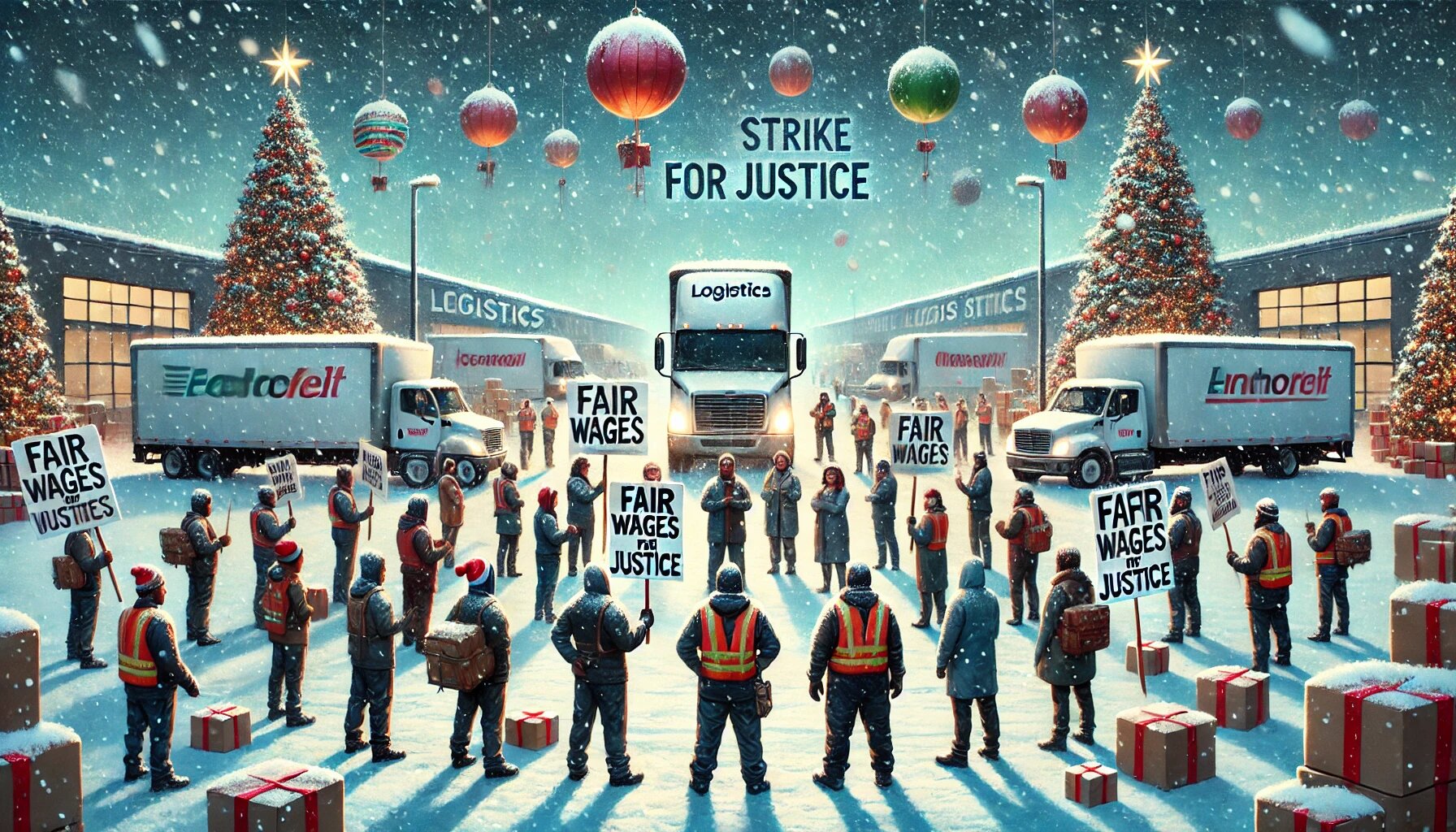
The Teamsters Stand
The holiday season is a time of joy and celebration for many, but it brings immense pressure and demand for workers behind the scenes. In the midst of this high-stakes period, the Brotherhood of Teamsters launched a strike that not only disrupted supply chains but also highlighted systemic issues within the logistics industry. A Holiday Strike for Justice was a bold move, aimed at securing fair wages, safer conditions, and manageable workloads for workers who form the backbone of modern commerce.
The Critical Timing of the Teamsters Holiday Strike for Justice
The Teamsters strike was strategically planned to occur during the busiest time of the year. The holiday rush places extraordinary demands on logistics workers, with long hours, increased workloads, and heightened stress becoming the norm. This timing amplified the visibility of their grievances, making it impossible for companies, consumers, and policymakers to ignore their demands.
Teamsters faced stagnant wages that failed to keep pace with inflation, unsafe working conditions in high-pressure environments, and unrealistic delivery expectations. These challenges was compounded by the holiday rush and created a boiling point that led to a collective action.

Grievances That Fueled the Holiday Strike for Justice
The Teamsters demands echoed many of the issues raised by dock workers but were uniquely shaped by the dynamics of their industry.
Key grievances include!
Fair Compensation: Workers reported minimal pay increases despite the rising cost of living and increased workload during peak seasons.
Safer Work Environments: Logistics centers often lack proper tools and machinery, exposing workers to avoidable injuries and accidents.
Reasonable Workloads: The surge in online shopping during the holidays created unsustainable expectations, pushing workers to their limits.
These grievances underscored a systemic undervaluation of logistics labor, mirroring broader inequities across industries.
Connecting the Teamsters and Dock Workers
While the Teamsters and dock workers operate in different sectors, their struggles share significant overlap. Both groups face dismissive authority figures who prioritize profit margins over worker welfare. Unsafe conditions, lack of recognition, and stagnant wages are recurring themes in their grievances.

The timing of the Teamsters strike during the holiday season contrasts with the dock workers actions following hurricane recovery efforts. However, both movements emphasize the essential nature of their work and the urgent need for systemic reform. Together, these protests highlight a shared demand for equity, dignity, and accountability.
The Broader Impact of the Teamsters Holiday Strike for Justice

The Teamsters’ strike had ripple effects beyond the logistics industry. By disrupting supply chains during a critical period, they forced a reckoning with the human cost of operational efficiency. This protest served as a reminder that workers are not disposable resources but integral contributors to the economy.
Their actions also drew attention to systemic issues that extend beyond labor rights. The undervaluation of workers reflects broader societal challenges, including judicial systems where families face similar neglect and inequity. At Xtrusion Solution, we recognize these parallels and advocate for reforms that address the root causes of systemic injustices.
The Lessons of Collective Action
The Teamsters bold holiday strike underscores the power of unity in driving change. Their willingness to take a stand during a high-pressure period demonstrated the critical nature of their work and the unsustainable conditions under which they operated. By refusing to be silent, they pushed industries and policymakers to reevaluate priorities and invest in the well-being of their workforce.
As we examine this strike, it inspires us to consider how collective action can be leveraged to correct broader systemic issues. Whether in labor movements or judicial reform, the fight for equity requires persistence, collaboration, and a commitment to fairness.


